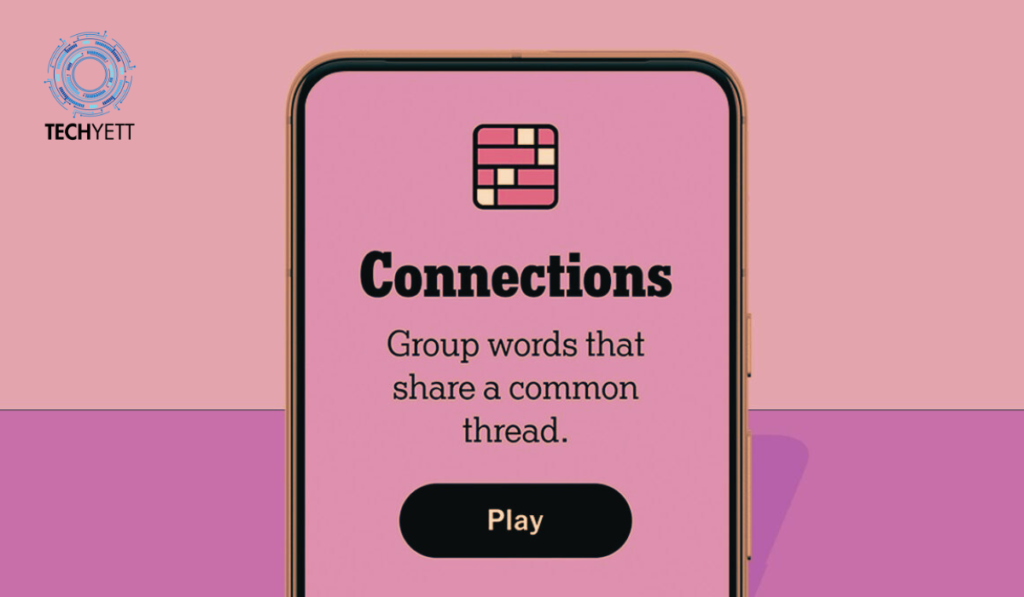The term “Connections hint” usually refers to hints or clues given in a popular puzzle game called Connections, like the one featured in The New York Times. In this game, players must categorize words into groups based on their shared characteristics. But sometimes, finding these connections can be tricky. That’s where hints come in handy.
Hints are small clues that help players make connections between words. They guide you in grouping the words correctly, so you can complete the puzzle. For those who are new to the game or even seasoned players, hints are a great way to avoid frustration and improve accuracy.
What is the Connections Game?
Connections is a fun and challenging word puzzle game. The game starts with a grid of 16 words, and your task is to divide them into four groups. Each group has four words that share a common theme, such as synonyms, colors, animals, or famous people. But the trick is that some words may seem to fit into more than one category, making it tough to figure out the correct groupings.
The game is designed to make you think critically and find patterns. Each puzzle is a mental workout, perfect for improving problem-solving skills and vocabulary.
How Connections Hints Help Players
Connections hints are tools provided within the game to assist players in figuring out how to group the words. These hints usually come in the form of small clues that point toward the categories. For example, you might get a hint that tells you one group is about animals, and from there, you can begin eliminating and grouping words correctly.

Types of Connections Hints
In many games like the NYT Connections, hints are color-coded to show their difficulty. Here’s what the colors typically represent:
- Yellow: Easiest category or group.
- Green: Fairly easy, but may require some thought.
- Blue: More challenging, may involve trivia or obscure knowledge.
- Purple: The hardest, often involving deep word associations or rare knowledge.
The hints you use depend on how much help you want. Starting with the easier hints can boost your confidence, while the harder hints push your brain to think more creatively. More information about Unblocked Games Premium.
Tips for Using Connections Hints Effectively
If you’re stuck on a tough puzzle, using hints wisely can help you avoid common mistakes and finish the game quicker. Here are a few strategies:
Start with Easy Hints
Begin with the yellow or green hints. These are usually the easiest to guess and can give you a solid foundation for solving the rest of the puzzle. Once you’ve grouped the easier categories, move on to the harder ones.
Look for Patterns
Pay attention to the relationships between words. Sometimes, you’ll find patterns in how words relate to each other. For example, if three words seem to fit a certain category, look for a fourth that complements them.
Avoid Overthinking
It’s easy to overthink the connections between words, especially when you’re facing more difficult categories. Trust your instincts and try not to second-guess yourself too much. If something doesn’t seem right, move on and come back to it later.
Connections Hints in Popular Puzzle Games
Hints are a common feature in many word games, especially in The New York Times’ Connections puzzle. This game has grown in popularity, much like other puzzle games like Wordle and Spelling Bee, which also offer hints and clues to assist players.
By providing hints, these games ensure players stay engaged without becoming too frustrated. A well-timed hint can help a player finish a puzzle and feel a sense of accomplishment.
The Role of NLP in Puzzle Games
Natural Language Processing (NLP) plays a key role in modern puzzle games. NLP helps understand word relationships, meaning, and context, which is crucial for creating games like Connections. It helps generate puzzles, refine hints, and make sure the game is challenging yet solvable.
NLP also ensures that hints are relevant to the puzzle and lead players in the right direction without giving too much away.
How to Improve at Solving Connections Puzzles
Getting better at solving these puzzles requires practice and patience. Here are a few tips to enhance your puzzle-solving skills:
- Play Regularly: The more puzzles you solve, the better you’ll get at recognizing word patterns and connections.
- Use Online Tools: There are plenty of word association tools and websites that can help you learn more about word meanings and relations. These tools can boost your understanding of difficult words.
- Review Past Solutions: Check out past Connections puzzles to see how the words were grouped. This can give you insights into how future puzzles might work.
FAQs
What is the goal of the Connections game?
The goal is to categorize 16 words into four groups of four based on their shared characteristics or themes.
Can you win Connections without using hints?
Yes, but hints can make the game easier, especially for new players or when tackling more difficult categories.
Where can I find daily hints for the Connections game?
You can find daily hints for the NYT Connections game on websites like Word Tips and The New York Times. Some online forums also discuss strategies and provide help.
Conclusion
In conclusion, Connections hints are valuable tools that can help players navigate the challenging word groupings in puzzle games like The New York Times’ Connections. By using hints wisely and practicing regularly, you can improve your puzzle-solving skills and enjoy the game even more. Don’t be afraid to use hints when needed—they’re there to help you make the right connections!




